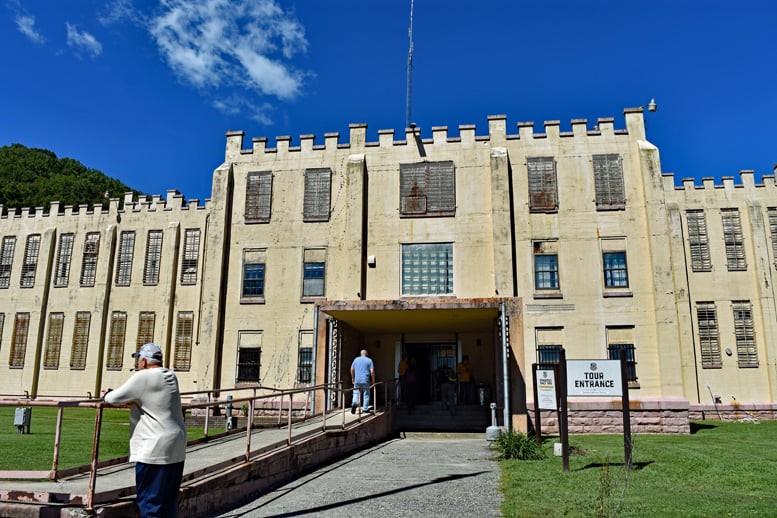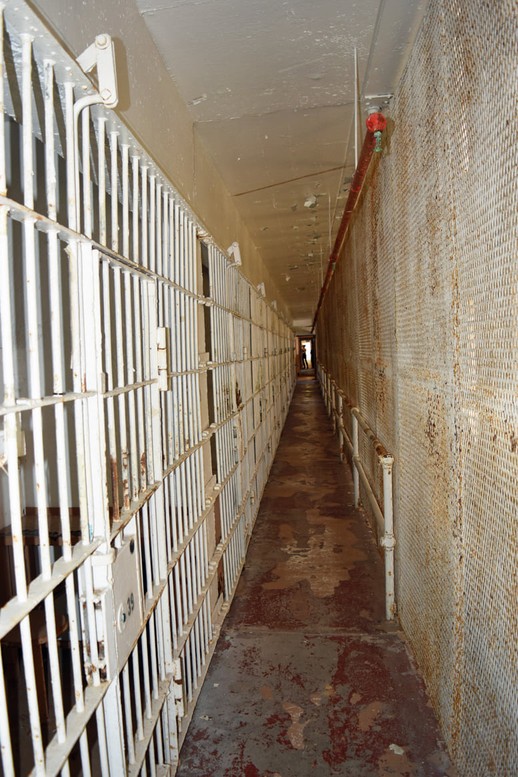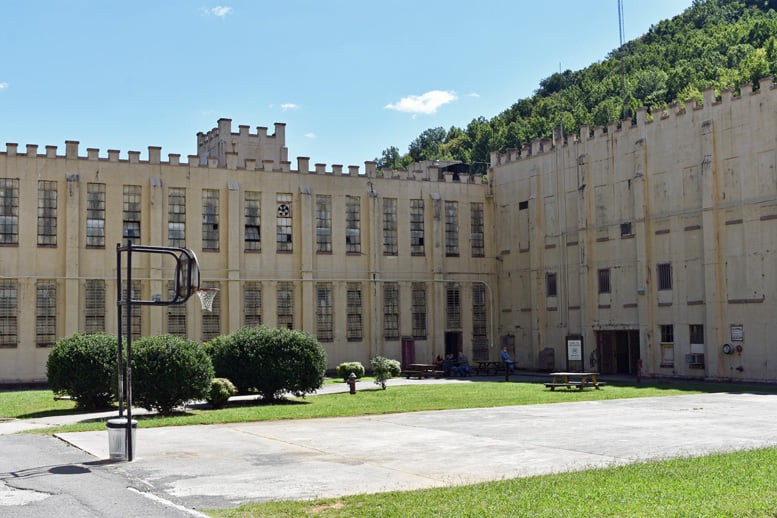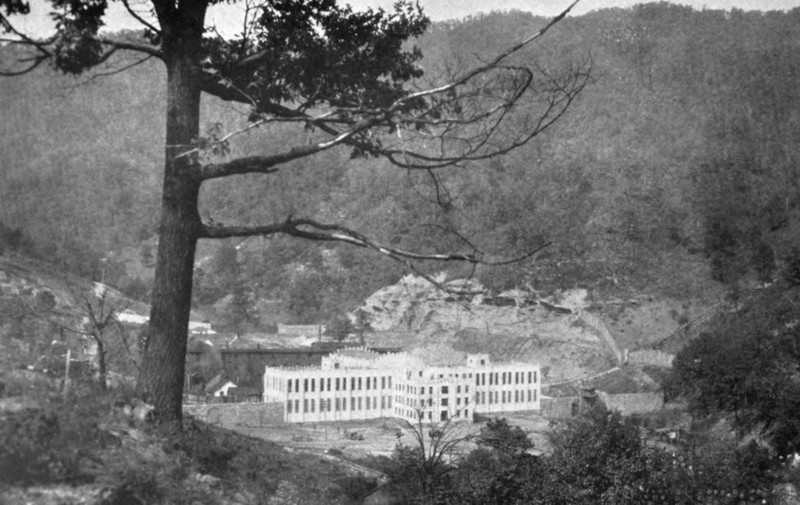Brushy Mountain State Penitentiary
Introduction
Text-to-speech Audio
This location was the site of the state of Tennessee's Brushy Mountain State Penitentiary from 1896 until 2009. The original prison building, of wood frame construction, was replaced in 1933 by the stone cruciform building now on the site. Inmate labor was used to build the prison, and Brushy prisoners worked for decades in the adjacent coal mines. James Earl Ray, who was convicted of assassinating Rev. Dr. Martin Luther King Jr. in Memphis in 1968 was a prisoner at Brushy from 1970 until 1992. He famously escaped from the prison with six other convicts in 1977, but was recaptured after a three-day manhunt. The state of Tennessee closed Brushy Mountain State Penitentiary in 2009. Since 2018, the former prison at Brushy Mountain has been open for public tours and events.
Images
Brushy Mountain State Penitentiary, exterior view, September 2021

Brushy Mountain State Penitentiary, interior view, September 2021

Brushy Mountain State Penitentiary, exterior wall, September 2021

Brushy Mountain State Penitentiary, exterior view, September 2021

Brushy Mountain State Penitentiary, exterior view, ca. 1934

Backstory and Context
Text-to-speech Audio
Brushy State Penitentiary opened in Morgan County, Tennessee in 1896. Prisoners were held in wooden barracks and worked in the nearby coal mines. For most of its life, Brushy Mountain was a maximum security facility reserved for the worst offenders in the state's correctional system. Many of its inmates were serving life sentences or had been sent to Brushy because they had presented discipline problems at other state penal facilities.
For years, Tennessee newspapers carried reports of deplorable conditions at the Brushy Mountain prison, and by 1930, the main building there had been declared a firetrap. It was razed and replaced with a new concrete and stone building in 1933. Prisoners quarried the sandstone used in the construction of the new facility.
One of Brushy's most infamous prisoners was James Earl Ray, the convicted assassin of Rev. Dr. Martin Luther King Jr. Ray was incarcerated at Brushy from 1970-1992, and died in a different facility in 1998. He escaped from Brushy with several other prisoners in 1977, using a ladder cobbled together with pieces of pipe. Ray was recaptured after a 54-hour manhunt.
The state of Tennessee closed Brushy Mountain Penitentiary in 2009. The last prisoners left Brushy on June 4, 2009. The closure of the prison was an economic blow to the area, as many local residents in the surrounding Morgan County spent their entire working careers as employees at the prison. As many as five generations of some families had worked there since the facility's opening in 1896.
In 2018, the former prison was opened for public tours and events by the Brushy Mountain Group, which also operates a distillery and restaurant on the site.
Sources
Tour Brushy website [tourbrushy.com ; retrieved 28 Sept 2021]
"Raze Fire Trap at Petros Soon: State Convicts Will Erect Three-Story Building in Form of Cross," Knoxville News-Sentinel, 16 April 1933, p.1.
"Ray Escapes: King Assassin Breaks Out of Brushy," Kingsport News, 11 June 1977, p.1.
"Ray's Breakout," TIME Magazine, vol. 109, no. 25, June 1977, pp. 12–16.
Zilliak, Lindsey. "Prison Opens Its Doors: Brushy Mountain Inmates Transferred As Complex Shuts Down After 113 Years," Knoxville News-Sentinel, 8 June 2009, p.A1.
Humphrey, Tom. "State Clears Move to Develop Brushy Prison," Knoxville News-Sentinel, 21 April 2014, p.7.
Fowler, Bob. "Old Brushy Prison Going Tourist," Memphis Commercial Appeal, 13 Nov 2015, p.15.
Wilusz, Brian. "Get Tourist Glimpse of Brushy Mountain Prison This Weekend," Knoxville News-Sentinel, 27 July 2018, p.10A.
Cole, Regina. "Visit the Big House at Brushy Mountain, Voluntarily," Forbes, 28 May 2019 [https://www.forbes.com/sites/reginacole/2019/05/28/visit-the-big-house-at-brushy-mountain-voluntarily/?sh=60571db0658f ; retrieved 28 Sep 2021]
Gerald Larsen
Gerald Larsen
Gerald Larsen
Gerald Larsen
Biennial Report of Department of Institutions of Tennessee, 1932-1934, p.175.
